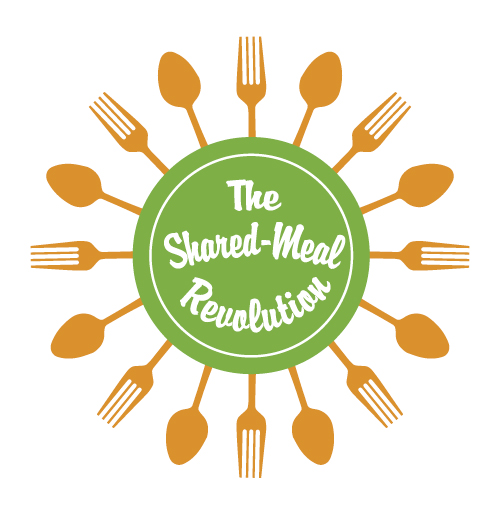At Readers.com, we love a good, can’t-put-down book — or maybe even a whole library full of them. From fan favorites and must-read lists to up-and-coming authors, we’ve interviewed the greatest literary enthusiasts around. So what exactly is on their nightstand? Read on to find out, and be sure to check back regularly for the latest page-turning talk.
In this edition of What’s On My Nightstand? we spend some time getting to know author Carol Archambeault. Carol’s book The Shared-Meal Revolution is all about the importance of friends and family consistently setting aside time to share a meal together. In today’s busy, technology-driven world, Carol feels it’s more important than ever to focus on nurturing relationships and committing to the important tradition of sharing food in the company of each other. Enjoy our interview with Carol — we know you’ll be inspired by her shared-meal philosophy!
 |
 |
Could you begin by telling us a little about your book The Shared-Meal Revolution?
Carol: Absolutely. The Shared-Meal Revolution is part research, part cultural study, and part memoir in the style of a self-help, guided journey. It’s a book that promotes making space in your life for one shared meal, every day. It’s especially important for families, though I feel a shared-meal ritual is important for everyone coping with today’s over-scheduled, highly distracted lifestyle.
Was there a pinnacle moment in your life that made you want to write about the importance of sharing meals?
Carol: You could say that my dedicated interest in this topic began in 2000 following the passing of my mother. During this time I felt a little lost, and as a result, I started sharing even more meals to gain support, clarity, and momentum for my next stage in life. Experiencing this renewal led me to return to school to study human development, which resulted in my masters thesis on how the ritual of family meals has changed over generations. I discovered best practices and strategies I felt would be helpful to other families. It was then that the flame to share what I learned became ignited.
What advice would you give a busy family who has trouble finding time to sit down together for a daily meal?
Carol: Finding time is a common pitfall for many families. My overall recommendation is to prioritize a daily meal together over practically any other activity — even if that means family members reduce an activity to create the time. Discovering specifically what’s keeping members from sharing meals can help people create a plan that will be workable. For example, some families can’t coordinate a time together for dinner, so they have a shared breakfast or lunch. I encourage families to work with the knowledge that a shared-meal ritual works quite well when family members collaborate, sharing in both the responsibilities and the fun. A shared-meal plan gets better with time, and the benefits people feel from the ritual naturally encourages members to continue making it a priority. Many families feel it’s the highlight of their day.
For couples or single parents who have recently become empty nesters, do you have any tips or advice for how to keep up with a shared meal regimen, now that their kids are off to college or moved out of the house?
Carol: There are several tips that may be useful. For example, couples could include a feature in their shared-meal plan which brings them back to their dating years, like visiting a restaurant they went to on their first date or take turns cooking for each other. Among the advice for single parents, I’d suggest a neighborhood meal rotation among other single-parent families. Empty nesters can consider what traditions they want to maintain, but also what changes they want to make due to a shorter “guest list.” They might try a local cooking class to learn how to prepare a new ethnic cuisine and meet some fellow empty nesters (and new dining companions) along the way. There are many ways to refresh a shared-meal ritual when your life circumstances change. Viewing these changes as opportunities to try something new is helpful.

In your book, you propose that when we abandon the shared-meal experience, we starve ourselves of the connection that is as necessary to our survival as the actual food we eat. What brought you to this conclusion? Was this from personal experience or through research?
Carol: Both. There is abundant research supporting how connection with one another is vital to a person’s health. It’s instinctual for humans to seek ways to form connections. Also, from childhood, I have seen firsthand how shared-meal rituals have helped me nurture lasting relationships and bonds with family and friends. These are the personal connections that truly matter as you walk through life. A shared-meal ritual offers so many powerful benefits, such as those associated with taking care of your physical, social, and psychological health, and more. Overall, a shared-meal ritual helps you to feel whole.
In this modern age of technology in the home — smart phones, tablets, televisions — what’s your take on unplugging in order to make meals happen?
Carol: I appreciate technology and all of the wonderful ways it helps us gather information and make some manual tasks easier. However, it is essential to create some boundaries and unplug during meals. Meals still happen if people are playing on their iPhones, but it’s far from a best practice. A primary goal of sharing meals is to experience each other, and that just can’t happen fully if people are repeatedly taken out of the moment.
Now that you’ve released this book, what’s next? Do you have any ideas for any future books?
Carol: Yes. I’ve begun expanding my research and ideas for two other books. Their themes include exploring the meal practices of other countries; another is observing a shared-meal ritual from a child’s perspective.
We have to ask, what’s your favorite meal? Would you mind sharing with us your favorite recipe?
Carol: My favorite recipe is a simple dish of spinach linguine, a few squeezes of lemon, drizzled olive oil, and freshly grated parmesan cheese and toasted pine nuts to top it off. Like many, my culinary skills are basic. I find what enhances the shared-meal practice is to get in the kitchen with an open attitude, use simple, fresh ingredients, and have some fun! I’m confident that having the experience of the shared meal itself is just the right recipe, no matter what is served. My favorite meal? It happens each time I’m given the opportunity to share a meal with people I love.
If Carol’s interview left you hungry for more, check out her website for more information on how to purchase The Shared-Meal Revolution and tools for you and your family to begin experiencing the benefits of the shared-meal lifestyle!














0 Comments